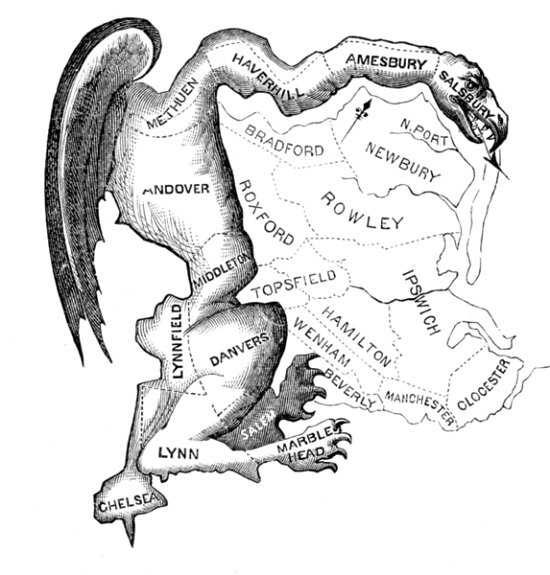AI Could Solve Partisan Gerrymandering, if Humans Can Agree on What’s Fair
By John P. Desmond, AI Trends Editor With the 2020 US Census results having been delivered to the states, now the process begins for using the population results to draw new Congressional districts. Gerrymandering, a practice intended to establish a political advantage by manipulating the boundaries of electoral districts, is expected to be practiced on […]


By John P. Desmond, AI Trends Editor
With the 2020 US Census results having been delivered to the states, now the process begins for using the population results to draw new Congressional districts. Gerrymandering, a practice intended to establish a political advantage by manipulating the boundaries of electoral districts, is expected to be practiced on a wide scale with Democrats having a slight margin of seats in the House of Representatives and Republicans seeking to close the gap in states where they hold a majority in the legislature.
Today, more powerful redistricting software incorporating AI and machine learning is available, and it represents a double-edged sword.

The pessimistic view is that the gerrymandering software will enable legislators to gerrymander with more precision than ever before, to ensure maximum advantages. This was called “political laser surgery” by David Thornburgh, president of the Committee of Seventy, an anti-corruption organization that considers the 2010 redistricting as one of the worst in the country’s history, according to an account in the Columbia Political Review.
Supreme Court Justice Elena Kagan issued a warning in her dissent in the Rucho v. Common Cause case, in which the court majority ruled that gerrymandering claims lie outside the jurisdiction of federal courts.
Justice Kagan stated, “Gerrymanders will only get worse (or depending on your perspective, better) as time goes on — as data becomes ever more fine-grained and data analysis techniques continue to improve,” she wrote in her dissent. “What was possible with paper and pen — or even with Windows 95 — doesn’t hold a candle to what will become possible with developments like machine learning. And someplace along this road, ‘we the people’ become sovereign no longer.”
The optimistic view is that the tough work can be handed over to the machines to take over, with humans further removed from the equation. A state simply needs to establish objective criteria in a bipartisan manner, then turn it over to computers. But it turns out it is difficult to arrive at criteria for what constitutes a “fair” district.
Brian Olson of Carnegie Mellon University is working on it, with a proposal to have computers prioritize districts that are compact and equally populated, using a tool called ‘Bdistricting.’ However, the authors of the Columbia Review account reported this has not been successful in creating districts that would have competitive elections.
One reason is the political geography of the country includes dense, urban Democratic centers surrounded by sparsely-populated rural Republican areas. Attempts to take these geographic considerations into account have added so many variables and complexities that the solution becomes impractical.

“Technology cannot, then, be trusted to handle the process of redistricting alone. But it can play an important role in its reform,” stated the author, Shruti Verma, a student at Columbia’s School of Engineering and Applied Sciences, studying computer science and political science.
However, more tools are becoming available to provide transparency into the redistricting process to a degree not possible in the past. “This software weakens the ability of our state lawmakers to obfuscate,” she stated. “In this way, the very developments in technology that empowered gerrymandering can now serve to hobble it.”
Tools are available from the Princeton Gerrymandering Project and the Committee of Seventy.
University of Illinois Researcher Urges Transparency in Redistricting
Transparency in the process of redistricting is also emphasized by researchers Wendy Tam Cho and Bruce Cain in the September 2020 issue of Science, who suggest that AI can help in the process. Cho, who teaches at the University of Illinois at Urbana-Champaign, has worked on computational redistricting for many years. Last year, she was an expert witness in a lawsuit by the ACLU that wound up in a finding that gerrymandered districts in Ohio were unconstitutional, according to a report in TechCrunch. Bruce Cain is a professor of political science at Stanford University with expertise in democratic representation and state politics.
In an essay explaining their work, the two stated, “The way forward is for people to work collaboratively with machines to produce results not otherwise possible. To do this, we must capitalize on the strengths and minimize the weaknesses of both artificial intelligence (AI) and human intelligence.”
And, “Machines enhance and inform intelligent decision-making by helping us navigate the unfathomably large and complex informational landscape. Left to their own devices, humans have shown themselves to be unable to resist the temptation to chart biased paths through that terrain.”
In an interview with TechCrunch, Cho stated that while automation has potential benefits for states in redistricting, “transparency within that process is essential for developing and maintaining public trust and minimizing the possibilities and perceptions of bias.”
Also, while the AI models for redistricting may be complex, the public is interested mostly in the results. “The details of these models are intricate and require a fair amount of knowledge in statistics, mathematics, and computer science but also an equally deep understanding of how our political institutions and the law work,” Cho stated. “At the same time, while understanding all the details is daunting, I am not sure this level of understanding by the general public or politicians is necessary.”
Harvard, BU Researchers Recommend a Game Approach
Researchers at Harvard University and Boston University have proposed a software tool to help with redistricting using a game metaphor. Called Define-Combine, the tool enables each party to take a turn in shaping the districts, using sophisticated mapping algorithms to ensure the approach is fair, according to an account in Fast Company.
Early experience shows the Define-Combine procedure resulted in the majority party having a much smaller advantage, so in the end, the process produced more moderate maps.
Whether this is the desired outcome of the party with the advantage today remains to be seen. Gerrymandering factors heavily in politics, according to a recent account in Data Science Central. After a redistricting in 2011, Wisconsin’s district maps produced an outcome where if the Republican party receives 48% the vote in the state, they end up with 62% of the legislative seats.
Read the source articles and information in Columbia Political Review, in Science, in TechCrunch, in Fast Company and in Data Science Central.





































